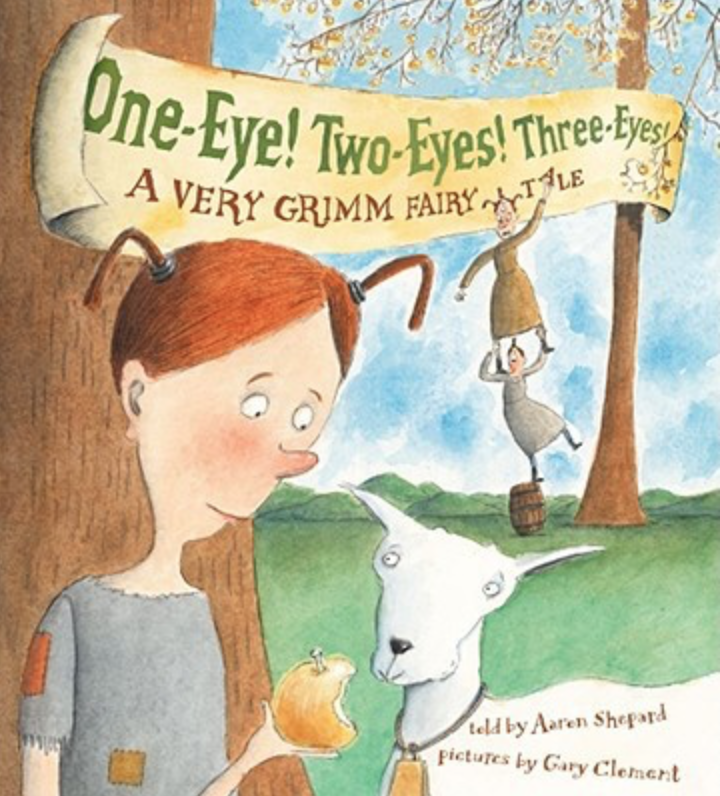One-Eye! Two-Eyes! Three-Eyes!
Book Module Navigation
Summary
One-Eye! Two-Eyes! Three-Eyes! explores questions of discrimination and sharing.
One-Eye! Two-Eyes! Three-Eyes! is about Two-Eyes and her two wicked sisters. They make fun of her for having only two eyes and wonder why she can’t look normal like they do. But Two-Eyes will show them. She’s got a fairy godmother, a magic goat, and a handsome knight to help her outsmart her terrible sisters and escape far, far away.
Guidelines for Philosophical Discussion
This is a story similar to Cinderella. Two-Eyes is bullied by her sisters every day. The basis of this discussion is about the nature of human actions. The main themes for the discussion are discrimination and sharing; each theme explores the consequences and benefits of each action.
The book raises issues that have been in our society for a very long time; namely discrimination against someone else because of the way they look. The two oldest sisters pick on the youngest sister because she has two eyes and they do not. The two oldest sisters only give Two-Eyes a small amount of food, that is never enough, and Two-Eyes always goes to bed hungry. While the only work that needs to be done is also done by Two-Eyes, One-Eye and Three-Eyes do nothing. The question raised is, is it okay for people to be discriminated against because of the way they look? In the end, Two-Eyes gets taken to the palace by a knight. If the other two sisters would have been nicer to Two-Eyes, then maybe they could have joined Two-Eyes in the palace instead of having to stay in their small cottage.
Another issue raised in the fairy tale is whether the actions of all three sisters were the best choices possible. The premise of the second set of questions is to raise the question of whether or not sharing is the proper choice. In the beginning, the reader learns that Two-Eyes gets bullied by her sisters. As the story continues, you see many more times that all three sisters have a choice to split what they have with each other; however, each time they aim for the action(s) that cause each other to suffer the most. In the end, rather than help her sisters learn how to get the apples down, Two-Eyes leaves the sisters and moves into the palace.
Questions for Philosophical Discussion
Discrimination
- Is it okay to treat others differently because they look different? Why?
- Can you think of examples where people are treated differently?
- Have you ever treated someone differently because they are different?
- Do you treat your brothers and sisters poorly because they are younger or older than you?
- How would you feel if you were the two-eyed sister?
- How did Two-Eyes respond to her sisters’ treatment of her?
- What would you do if you saw someone being discriminated against because of the way they looked?
- Is it okay for Two-Eyes to leave her two sisters behind? Why?
- When the sisters found out that they were the different ones, how do you think they felt? Why?
Sharing
- Is sharing a good idea? Why?
- Have you ever shared with someone without being asked?
- Do you share with your siblings?
- Was it okay for the sisters to chase away the goat?
- Would the one-eyed and the three-eyed sisters have been better off if they shared to begin with? Why would the sisters have been better off?
- Was it a good idea for her to keep the goat a secret?
- How would the story have been different if the sisters had shared?
Original questions and guidelines for philosophical discussion archived here. Edited June 2020 by The Janet Prindle Institute for Ethics.
Find tips for leading a philosophical discussion on our Resources page.






